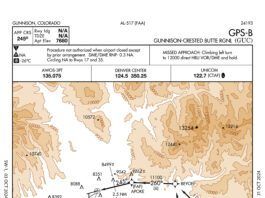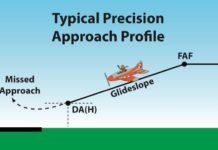On The Air: August 2018
At my home field in Farmindale, NY, (KFRG), one Sunday I was entering the pattern after a long trip. A student soloing in a Cessna 172 was in the pattern doing touch-and-goes. I heard the following exchange.Republic Tower: Cessna Two Six Seven Three Bravo, cleared for touch and go. Make right traffic and report the downwind.
Readback: August 2018
Thank you for a great publication. It really helps knock some rust off. My question is for Tim Vasquez: Where did you get that chart shown on page 22 of the April issue?As a SPIFR EMS helicopter pilot, icing is my Achilles heel. Not only do I have the same problems as the fixed wing community-weight, reduction of lift etc.-but I also have asymmetric shedding that will tear the aircraft apart rather quickly. Also, as an EMS aircraft, my flights are not very long so I never get above about 3 to 4000 feet.
Personal Minimums
Perhaps its my airline background, or perhaps Im just arrogant. But I would never think of planning an IFR flight unless I felt proficient enough to fly any reasonable approach all the way to published minimums. Sure, something might happen on the day of the flight or even on the way that might cause me to increase the margins a bit-and recognizing and reacting to that is a good thing-but planning to fly and simply excusing a lack of proficiency by increasing minimums seems to miss the point.
Briefing: July 2018
In June, the FAA put on hold its flight testing for the Piston Aviation Fuels Initiative (PAFI) unleaded 100LL replacement fuels program. The FAA said it would assess issues related to the differences between the two PAFI fuels and 100LL. Both fuel producers, Shell and Swift, are currently evaluating options to mitigate the impacts that these differences will present in fuel production, distribution, and operation in the GA fleet, said the FAA. The FAA also said it will also assess alternative fuels developed outside the PAFI program. Meanwhile, General Aviation Modifications Inc. (GAMI) said its close to completing testing on its own 100-octane unleaded fuel. GAMI sidestepped PAFI in favor of a more streamlined STC approval process.
Fly the Hook
Establish yourself on the reciprocal of the ILS localizer course, 351 degrees, and fly outbound on the localizer. Since youre outbound on the front course, remember to correct away from the needle on the localizer. (See, Reverse Sensing and Reverse Sensing-HSI in the June and July 2016 issues.) Two minutes is usual. Then turn to the outbound procedure turn heading of 036 degrees. The Instrument Flying Handbook specifies flying that heading for 40 seconds, although many of us were taught to fly it for a full minute. Either is fine so long as you remain inside the limit. Then, make a standard-rate left turn to 216 degrees and join the 171-degree localizer.
BasicMed Follow Up
The BasicMed exam follows a similar structure to an FAA physical with one big difference. In an FAA medical, the doctor needs to identify if body parts, organ systems and other general things such as blood pressure are: Normal or Abnormal. If the AME finds something abnormal, s/he must provide a narrative. By identifying an abnormality, the AME is making a diagnosis of sorts. In a BasicMed exam, the same body parts and organ systems only need to be examined, but not identified as normal or abnormal, thus no diagnosis is made.
Hurricane Warning
Although hurricanes are easily avoidable since they usually move to the front of the national news cycle, its good to have a working knowledge of them. One day you may find yourself caught in outer spiral bands as you try to move your plane out of danger, or your area may be the new target of a hurricane that deviates unexpectedly. Or perhaps you simply find yourself in the Caribbean in the late summer months with erratic Internet access-possibly a fortunate situation.
On The Air: July 2018
I took off from Islesboro (an island off the coast of Maine) in a C-150. I was going south down the coast that took me through the Portland ATC area. I then realized that I was going to fly over Moodys Diner in Waldoboro. This diner was made famous by Maine comedians Bert and I, and again later by Tim Samples.
Killer Charts
Jeppesen is updating symbology for STARs and SIDs charts. As part of the change, Jepp contracted with an outside firm to conduct an operational risk analysis. After an in-depth evaluation of the mitigation possibilities TRS recommended to Jeppesen to create a training tutorial.
Regulation Fine Points
Ill admit it: I enjoy searching out some little-known gems in the regulations. Some, of course, are items we should know-but often dont. Others are almost so esoteric that it simply might not matter to most of us.
Briefing: July 2018
Flight schools are finding it hard to retain instructors because airlines are hiring them away, according to a report from the U.S. Government Accounting Office. Schools also find it challenging to recruit new students, due to the high cost of training. Also, the Helicopter Association International, in a study undertaken with the University Of North Dakota, projected a shortage of more than 7600 helicopter pilots by 2030. Helicopter mechanics will become even scarcer, with a shortage of 40,613 predicted in the U.S. by 2036. Bills aimed at supporting aviation workforce development have been introduced in both the House and the Senate over the last several months.
Readback: July 2018
I bought my 2003 Ovation a couple years ago primarily for its flight in known ice certification (FIKI). Frequent trips to the Milwaukee and Philadelphia areas to see grandkids mean occasional exposure to ice. Id never flown with FIKI. My first use last year was very encouraging; climbing out of KUES through an icy layer into the clear we accumulated maybe 1/8 on the landing lights and wing tips but nothing anywhere else. However, I subsequently found and fixed multiple fitting leaks.














